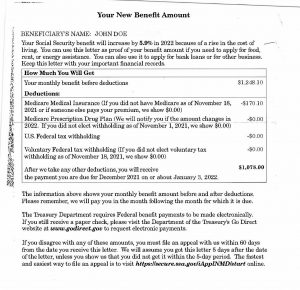Selling an appreciated asset or cashing-in/drawing down an IRA or an annuity are often necessary in a Medicaid context. An individual or couple looking at nursing placement may have no choice. It may be necessary to get the person going to the nursing home under $2,000 of countable assets. Or it might be necessary to liquidate a countable asset to purchase a noncountable asset.
They all have something else in common. Selling an appreciated asset, cashing-in an annuity, or drawing down an IRA all generate income. An appreciated asset will generate capital gains. Cashing-in an annuity will likely generate some ordinary income (depending on the difference between the cash value and how much was paid in premiums). And, of course, every cent that comes out of a traditional (non-Roth) IRA will be ordinary income.
When looking at a $10,000 monthly nursing home bill, the added tax expense (while unpleasant) may be quite acceptable.
But there is also the possibility of another hidden expense. IRMAA or Income Related Monthly Adjustment Amount (I pronounce it “Irma”). Most eligible humans pay $170.10 a month in Medicare Part B premiums. Many folks may not even realize this because the premiums are withheld from Social Security benefits before the money hits the bank.
HOWEVER: If an individual’s income exceeds $91,000 that $170.10 pops up to $238.10. If income exceeds $114,000 the premium increases to $340.20; income over $142,000 lifts the premium to $442.30. And so on. See a complete chart here.
Most people on Social Security don’t think of having that much income. But that all changes when someone cashes-in an IRA or sells an appreciated asset.
WHAT income counts? Something called Modified Adjusted Gross Income (“MAGI” – I pronounce it “Maggie” – or should it be like the guys on camels who brought gifts to Jesus?). MAGI is used in a variety of tax situations and has different definitions depending on the issue. For our purposes MAGI is Adjusted Gross Income (look at line 11 of Form 1040), with tax exempt income (Muni Bonds, anyone?) added back in. To add insult to injury, if your income goes up enough, a portion of Social Security benefits becomes taxable and the taxable part becomes part of MAGI.
Finally, IRMAA can be a bit stealthy. The MAGI used to calculate IRMAA is from two years prior. In other words, cashing in that IRA in 2022 will raise IRMAA in 2024.
Would all of this prevent someone from selling assets or cashing-in an IRA? Probably not if the alternative is $10,000 a month private pay in a nursing facility. But at least you won’t be shocked in two years.





